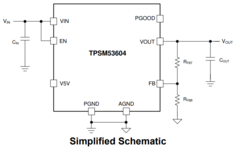theboom
Junior Member level 3
I'm seeking an adjustable, cool-running, very low-parts, continuous current limit, Vin about 4V at up to 4A continuous.
What alternate circuits are there?
LM338
It seems this regulator isn't available in SMD. Can this be done with other linear regulators? Or just the LM series?

TL431
I was told this will run cool, but doesn't do continuous current regulation -- it turns off on overcurrent. True?

MOSFET
I'm thinking that with prudent selection of the mosfet (a high-current device with low RDSon) it will run cool. No?

SMPS
I'd be happy to find a switched regulator, if it provides adjustable continuous current limiting with very few external parts and comparable COG. The AP6230X series are cheap and plentiful at Digikey. They do "cycle-by-cycle valley current limit" -- i'm unclear if that's continuous current limiting i desire. Problem is, doesn't appear to be adjustable. Maybe some clever way to make the current limit adjustable?

Others?
- Which of these limiters will run cooler, all things being equal?
- Will they all simply regulate the current, ie continuous limit? Or will they turn off current on overcurrent?
- Which would have fewest parts in a real-world practical circuit?
- Are they all temperature-compensated?
- Which would have the smallest PCB footprint, ie can they be implemented with all-SMD parts?
- How do costs compare, including external parts?
What alternate circuits are there?
LM338
It seems this regulator isn't available in SMD. Can this be done with other linear regulators? Or just the LM series?
TL431
I was told this will run cool, but doesn't do continuous current regulation -- it turns off on overcurrent. True?
MOSFET
I'm thinking that with prudent selection of the mosfet (a high-current device with low RDSon) it will run cool. No?
SMPS
I'd be happy to find a switched regulator, if it provides adjustable continuous current limiting with very few external parts and comparable COG. The AP6230X series are cheap and plentiful at Digikey. They do "cycle-by-cycle valley current limit" -- i'm unclear if that's continuous current limiting i desire. Problem is, doesn't appear to be adjustable. Maybe some clever way to make the current limit adjustable?
Others?
--- Updated ---
For example, injecting current into the feedback pin?Maybe some clever way to make the current limit adjustable?
Attachments
Last edited:
